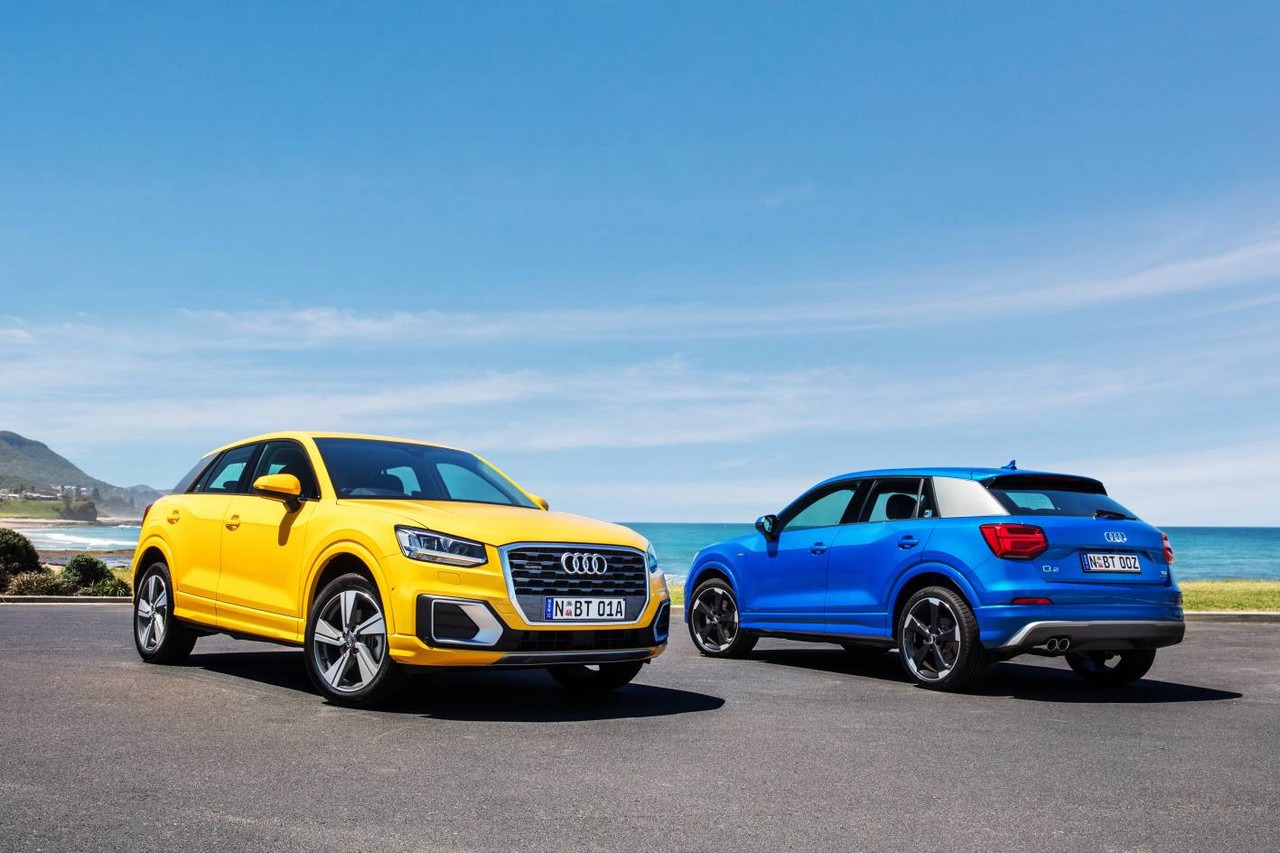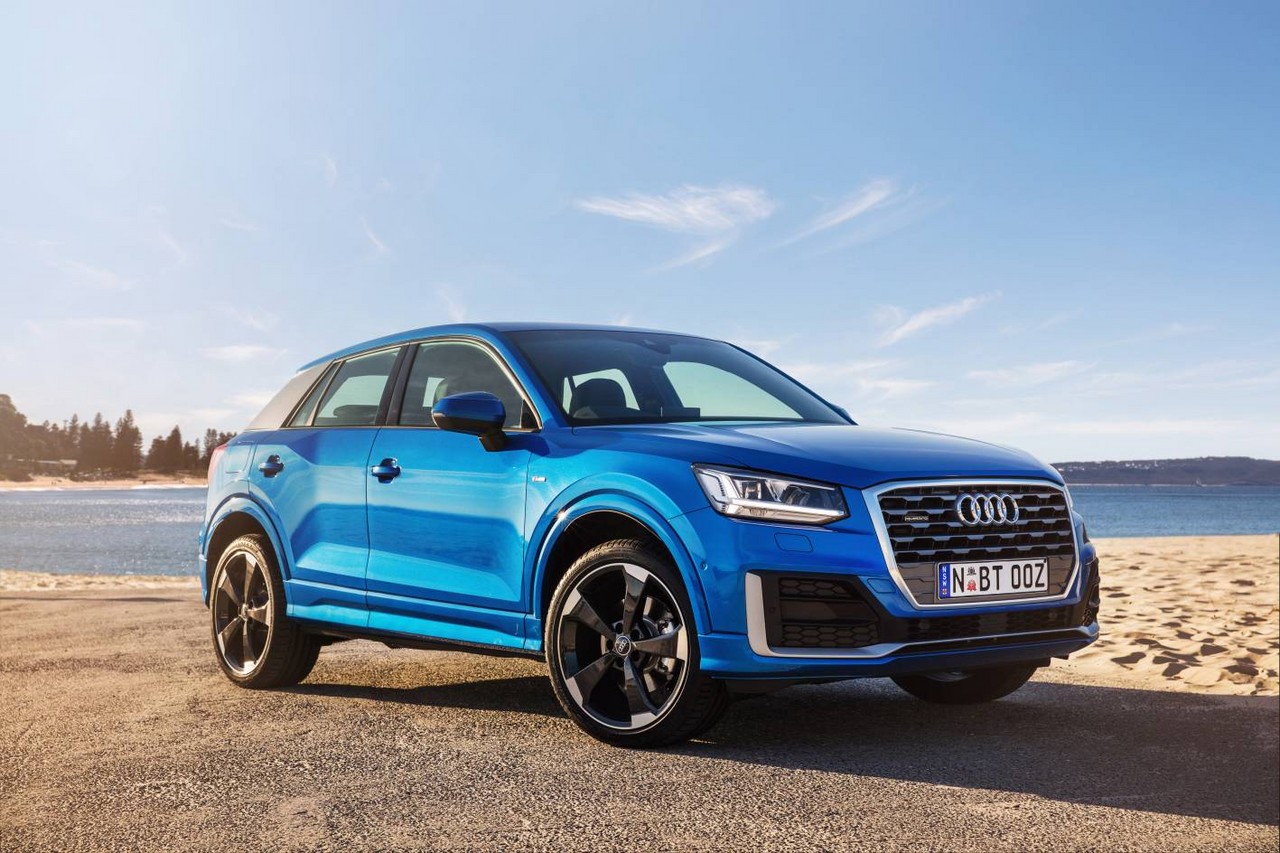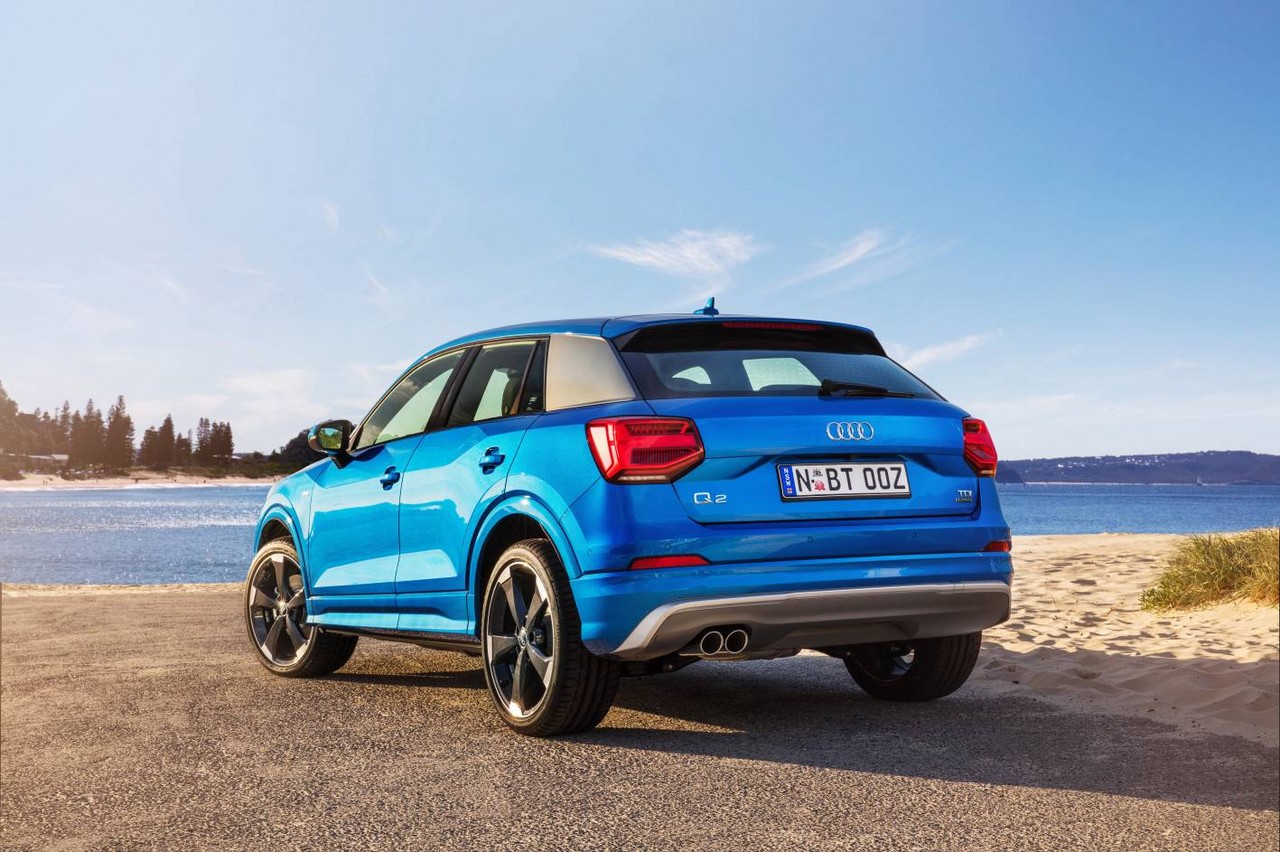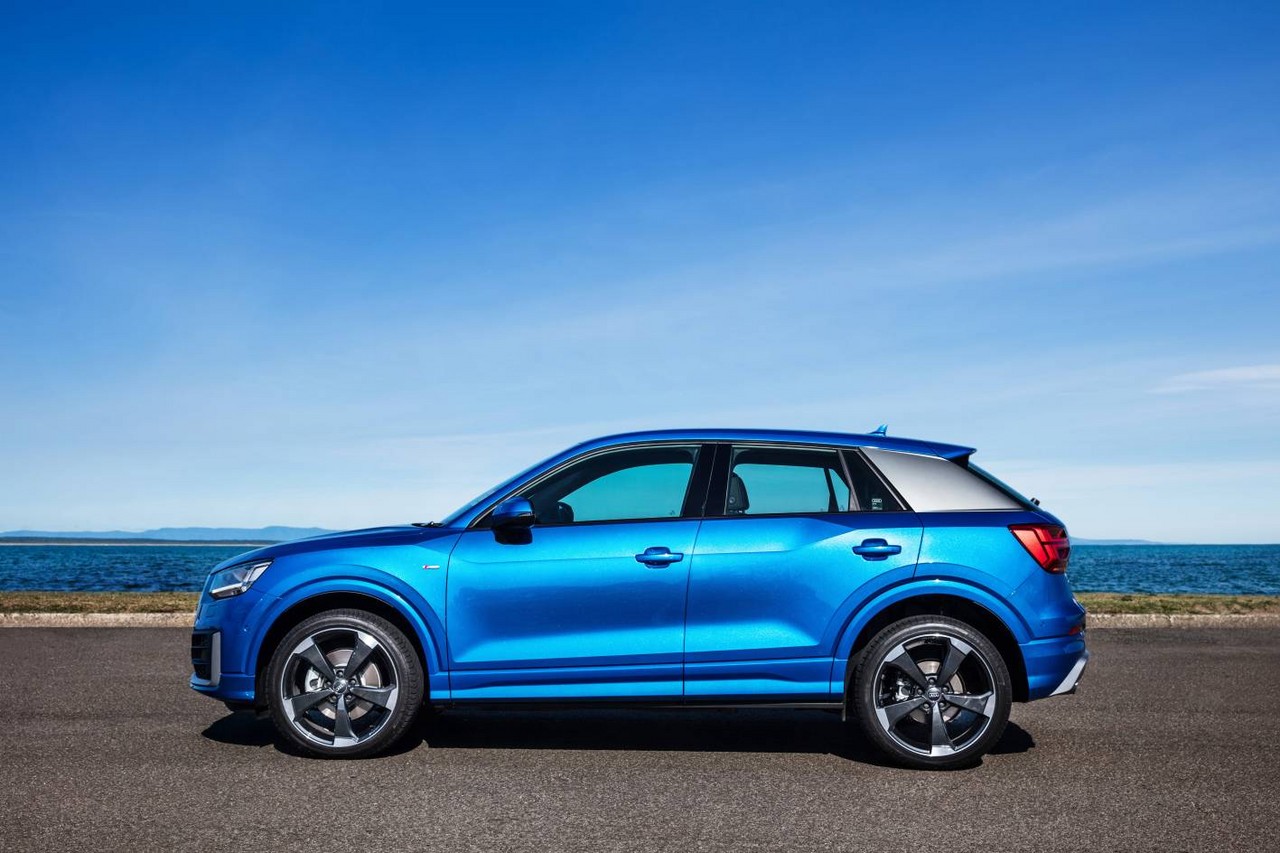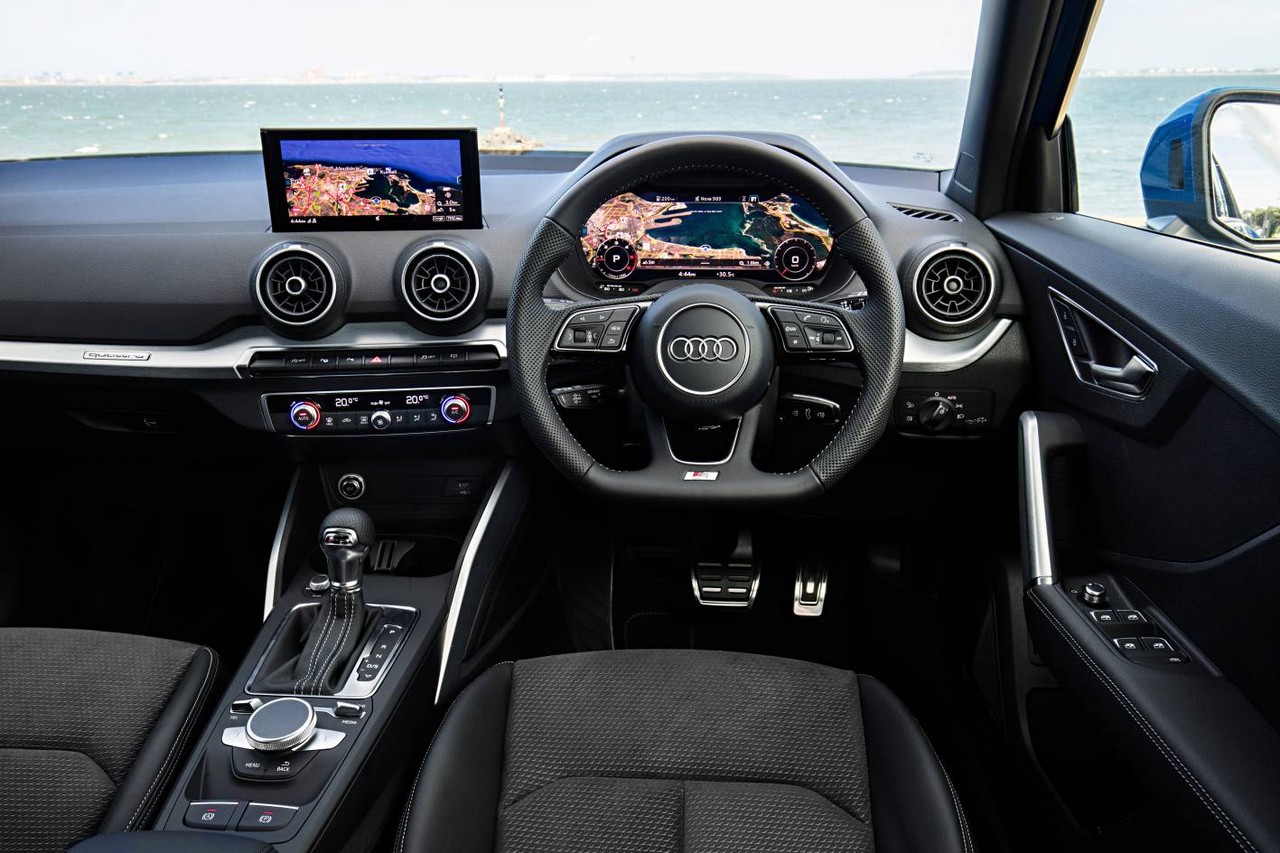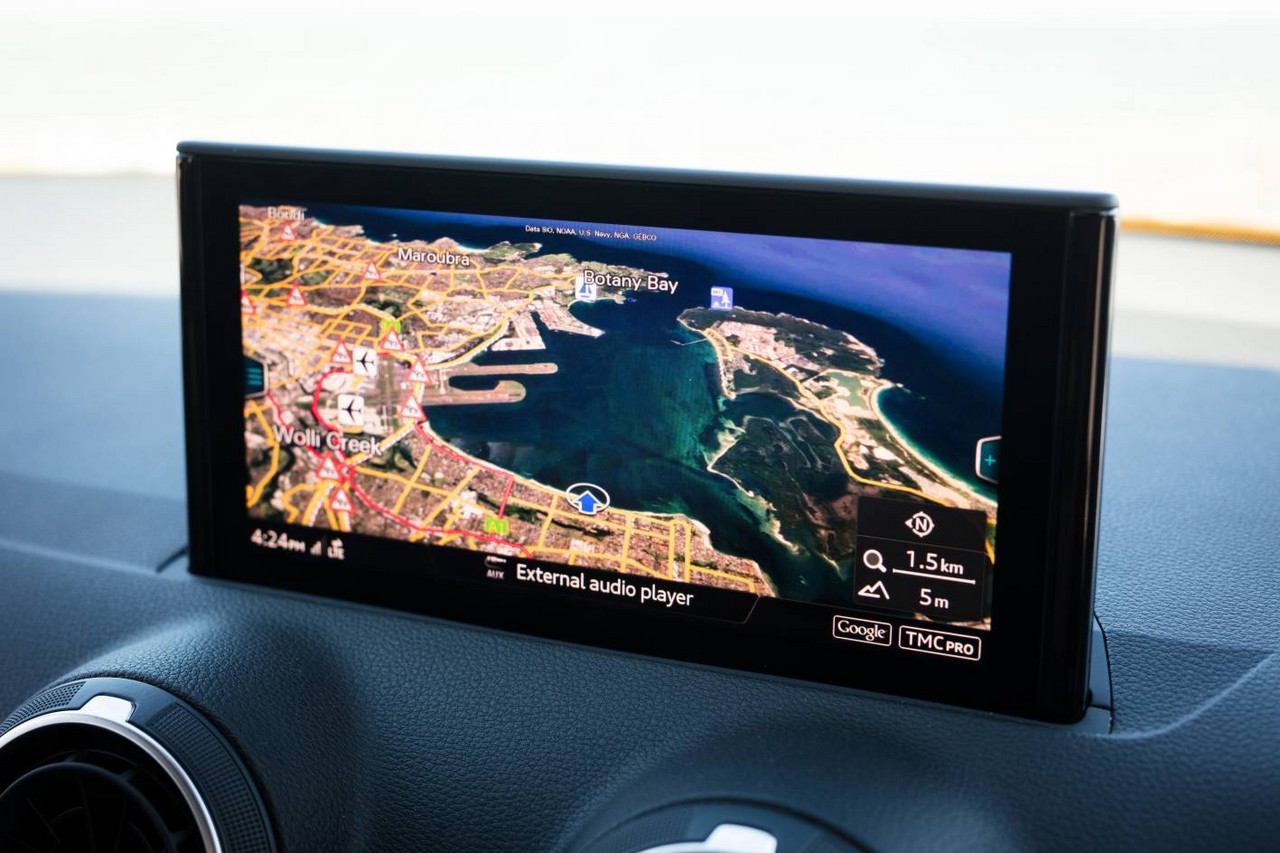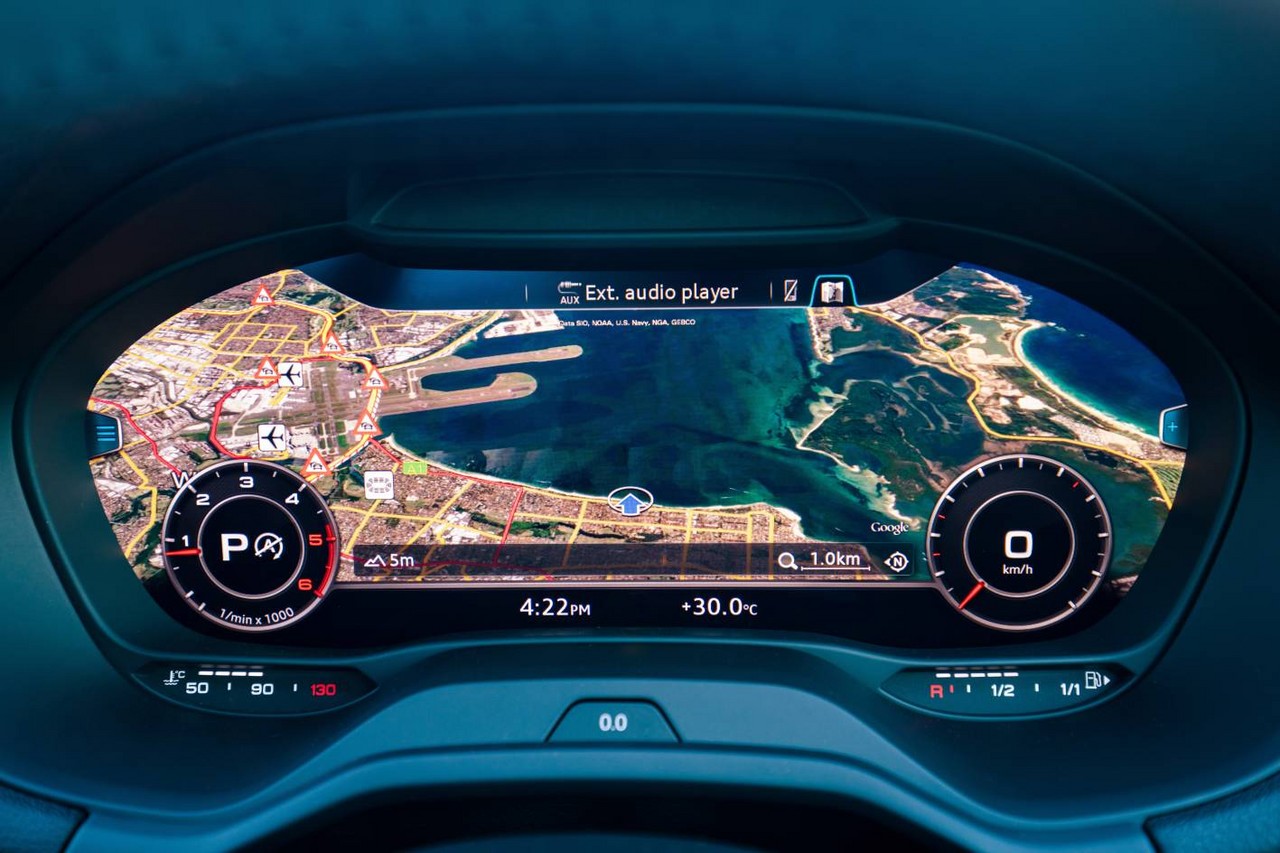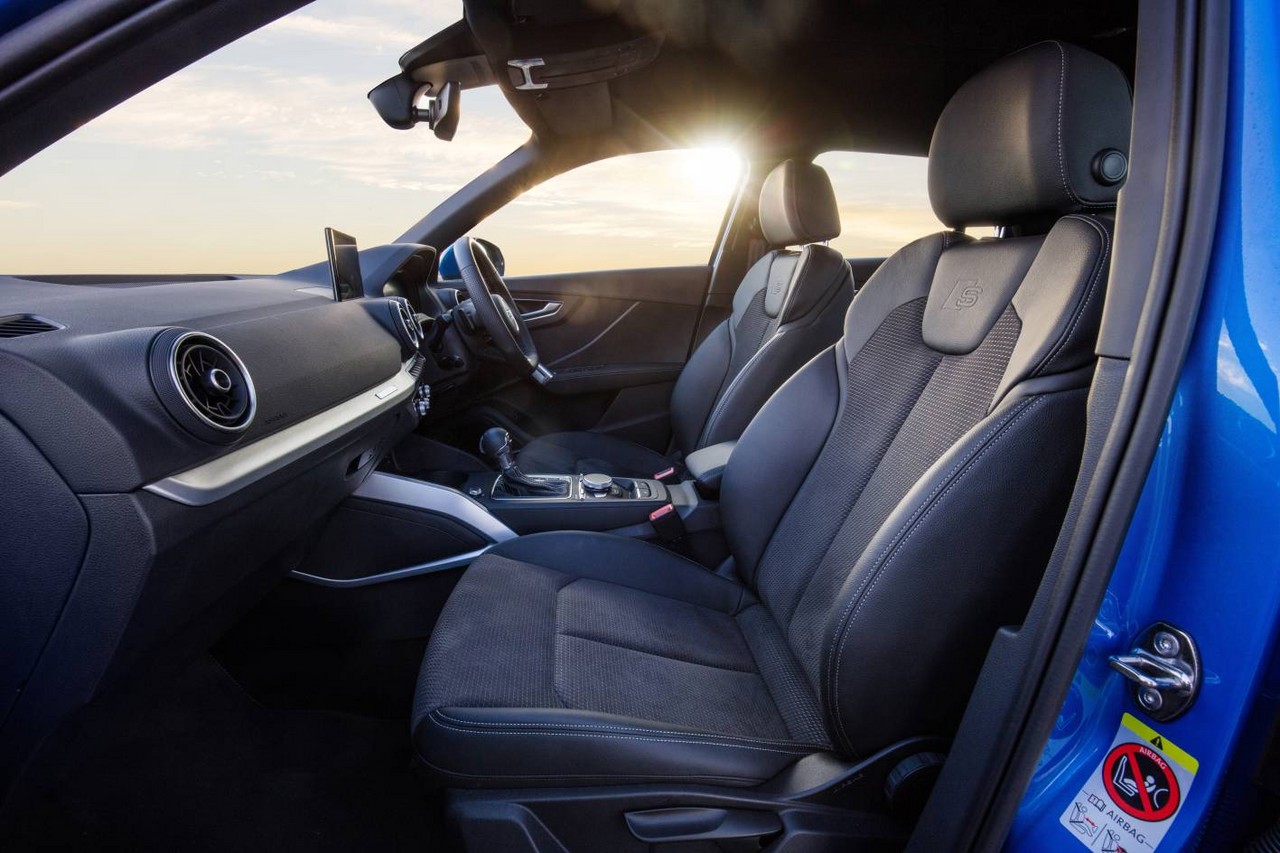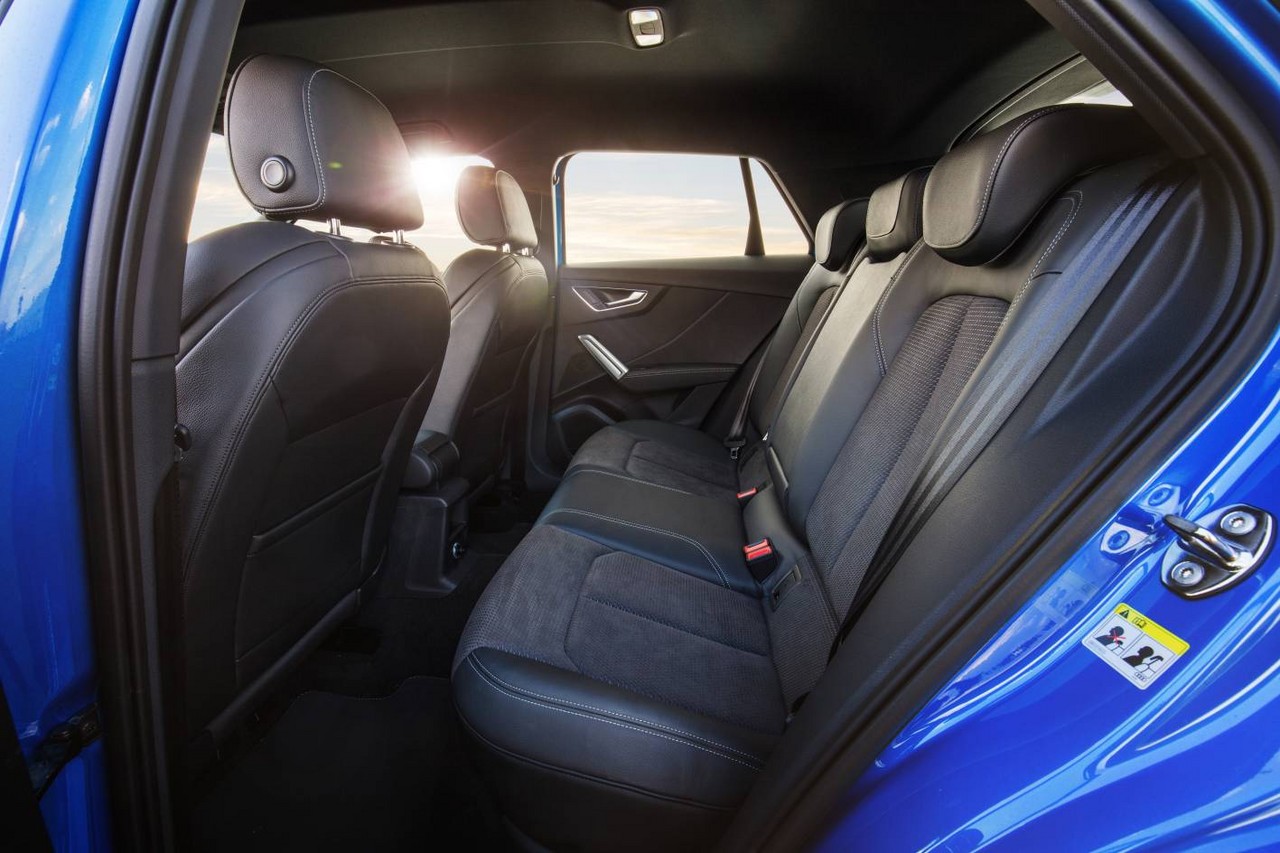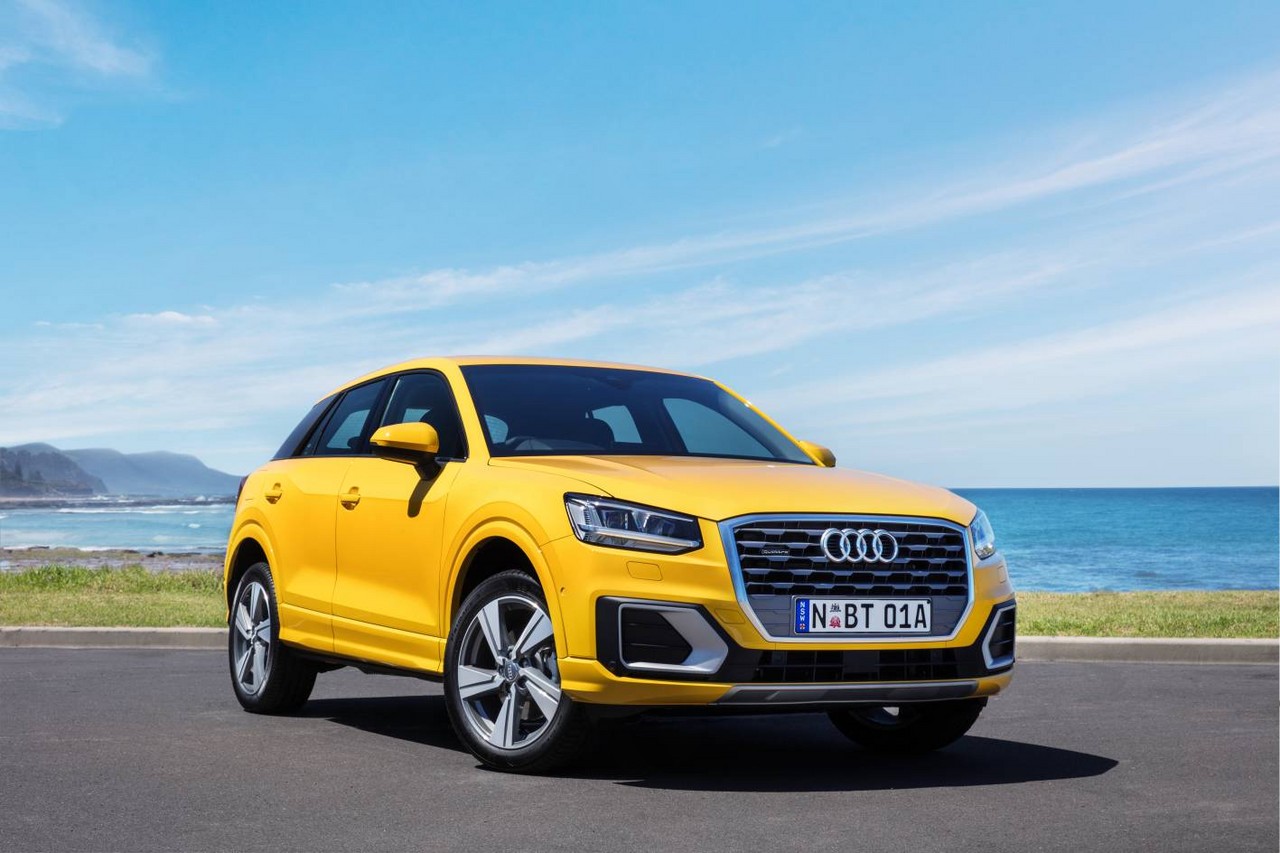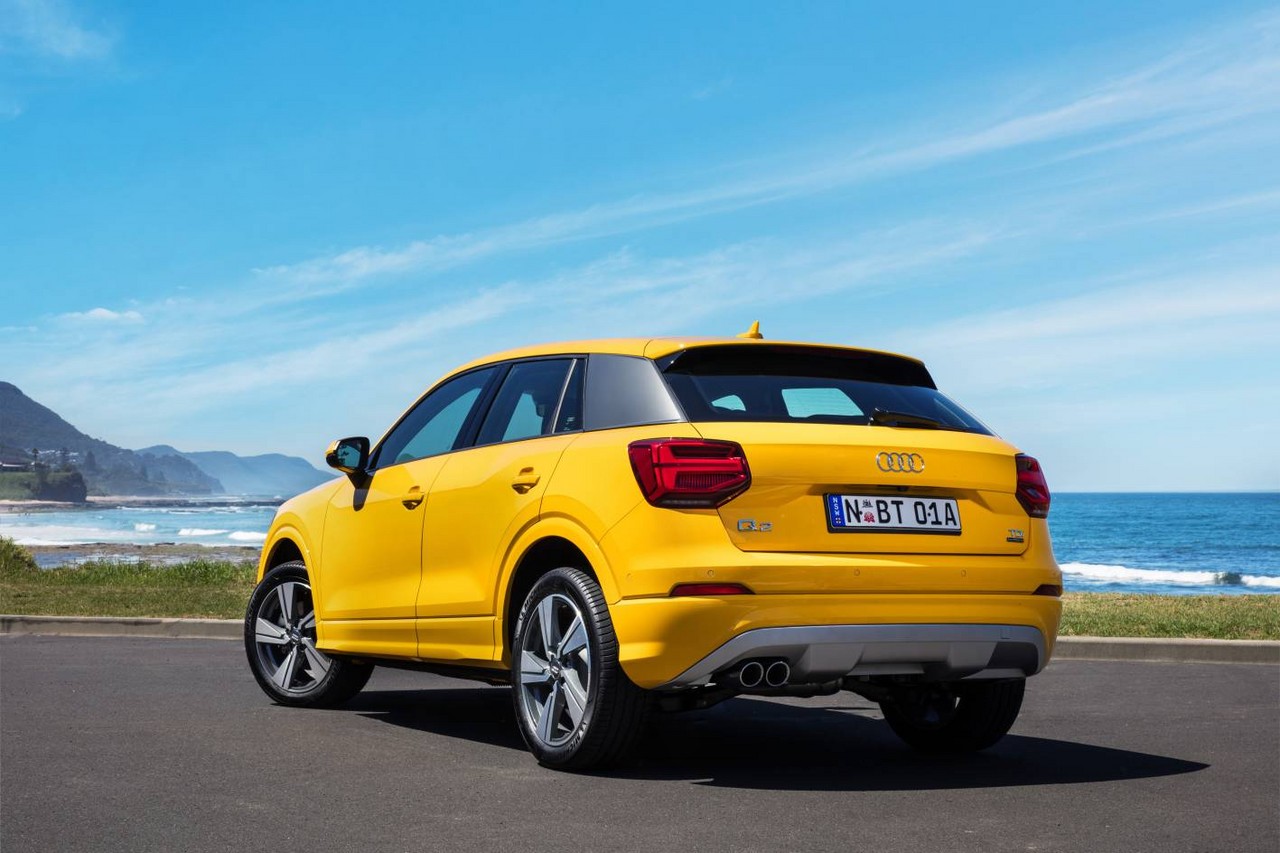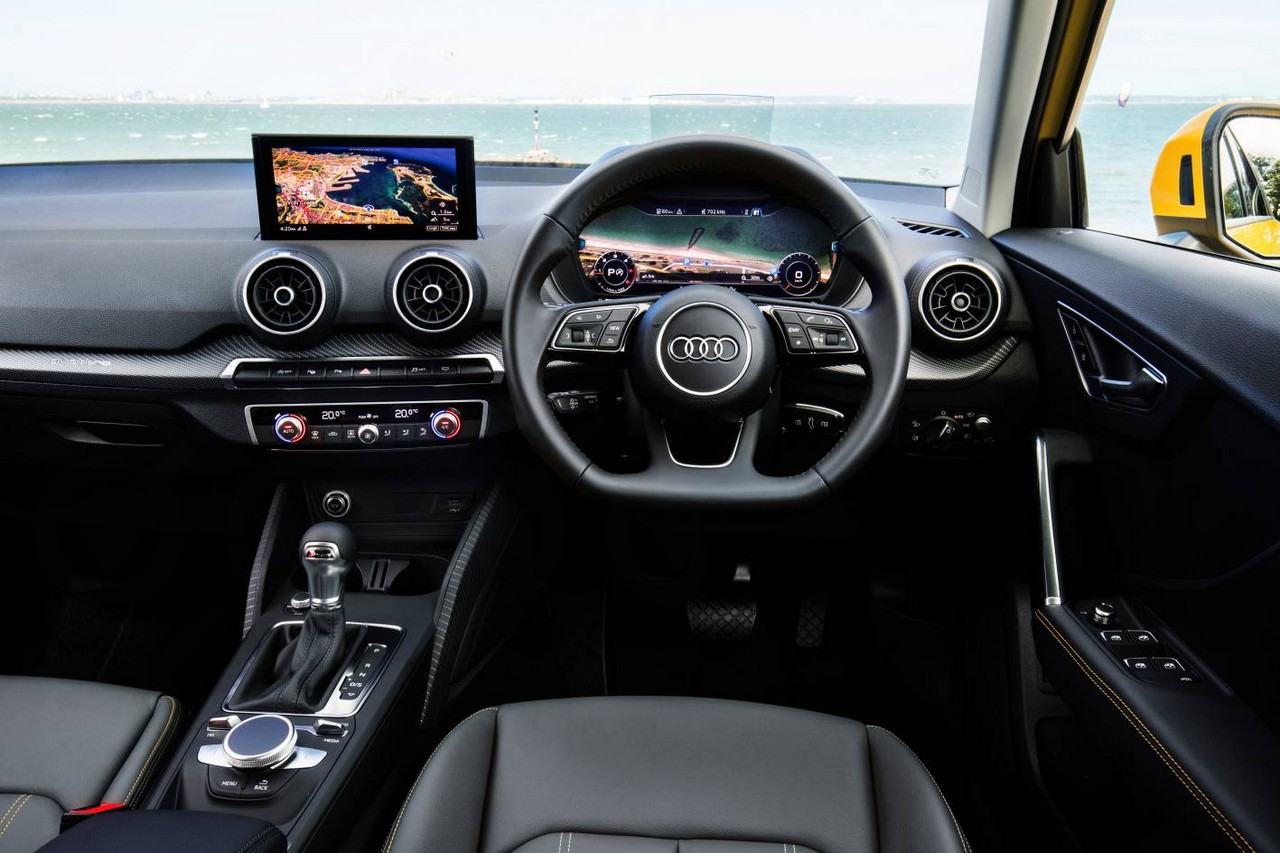
- High standard of interior fit and finish
- Predictable handling and good body control
- Five star safety rating and AEB fitted as standard
- Progressive steering aids manoeuvrability
- For 1.4 TFSI CoD, turbo lag below 2000 rpm
- Handling lacks agility of the related Audi 8VA A3 Sportback
- High retail price relative to Audi 8VA A3 Sportback
- Steering lacks feedback
Overview
Commencing production in October 2016 and officially released in Australia in February 2017, the Audi Q2 was a compact SUV. Manufactured in Ingolstadt, Germany, the Audi Q2 was powered by 1.4 TFSI CoD (Cylinder on Demand) and 2.0 TDI engines, both of which were mated to seven-speed double clutch transmissions (Audi’s ‘S tronic’) as standard. In November 2017, the Audi Q2 range was expanded with a 2.0 TFSI variant.
To reduce fuel consumption, all engines for the Audi Q2 could shut down at speeds of 7 km/h or less, while the 1.4 TFSI CoD engine could also shut down two cylinders (#2 and #3) under low loads. If the Audi Q2 was equipped with the optional ‘Audi drive select’ system, the ‘efficiency’ drive mode could disengage the clutch when the Audi Q2 was coasting to reduce engine braking.
| Variant | Engine | Trans. | Peak power | Peak torque |
|---|---|---|---|---|
| 1.4 TFSI CoD design | 1.4-litre CZEA turbo petrol I4 | 7sp DCT | 110 kW at 5000-6000 rpm | 250 Nm at 1500-3500 rpm |
| 2.0 TFSI quattro sport | 2.0-litre CZPB turbo petrol I4 | 7sp DCT | 140 kW at 4200-6000 rpm | 320 Nm at 1500-4200 rpm |
| 2.0 TDI quattro sport | 2.0-litre DFGA turbo diesel I4 | 7sp DCT | 110 kW at 3500-4000 rpm | 340 Nm at 1750-3000 rpm |
Haldex 5 all-wheel drive system (‘quattro’)
The Audi Q2 2.0 TFSI and TDI quattro had a fifth-generation Haldex all-wheel drive system which consisted of an electronically controlled and hydraulically actuated multi-plate clutch that was located in front of the rear axle differential (at the end of the prop shaft).
Under low loads or when coasting, the rear axle could be decoupled to minimise fuel consumption such that the Audi Q2 was front-wheel drive only. If there was a loss of front-wheel traction, or such a loss was anticipated by on-board sensors, the clutch would engage to force the plates together and transfer torque to the rear axle ‘in just a few milliseconds’ for a 50:50 front:rear torque split.
Dimensions
The Audi Q2 was underpinned by Volkswagen’s MQB platform. Compared to the Audi 8U Q3 , the Audi Q2 was 194 mm shorter (at 4191 mm), 37 mm narrower (1794 mm, excluding door mirrors), 82 mm lower (1508 mm) and had an 8 mm shorter wheelbase (2601 mm); ground clearance was 147 mm. Furthermore, the Audi Q2 had a drag coefficient of 0.30 Cd.
The Audi Q2 had a luggage capacity of 405 litres with the rear seats in position, though this increased to 1050 litres when the rear seats are folded down.
Suspension
The Audi Q2 had MacPherson strut front suspension, though the rear suspension depended on the drivetrain. While front-wheel drive models had semi-independent rear suspension (understood to be a rear torsion beam), models with the quattro all-wheel drive system had four-link rear suspension.
With the optional ‘Audi drive select’ system, the Audi Q2 was fitted with twin-tube, gas-filled shock absorbers that had an electro-magnetic valve to control the flow of hydraulic fluid between the inner and outer tubes, thereby affecting damping resistance.
Steering
The Audi Q2 had rack-and-pinion steering with electric power assistance. As standard, the Audi Q2 had progressive ratio steering whereby the steering gear ratio increased in proportion to steering input, providing a more direct ratio for larger steering movements.
Safety equipment
Standard safety equipment for the Audi Q2 included dual front airbags, a driver’s knee airbag, front seat-mounted side airbags, full-length curtain airbags, ABS, electronic brake force distribution, brake assist, electronic stability control, traction control and front seatbelts with pre-tensioners and load limiters.
As standard, the Audi Q2 was equipped with ‘Audi pre sense city’ which included Autonomous Emergency Braking (AEB) and pedestrian detection functions. Operating at speeds up to 85 km/h, Audi pre sense city used a windscreen-mounted front camera to scan the road for other vehicles and pedestrians. If there was a risk of a collision, the driver received visual and audible warnings, followed by a jolting application of the brakes. If the driver failed to respond, full braking force could be applied autonomously. At initial speeds of up to 40 km/h, collisions can be prevented; at higher speeds (up to 85 km/h), the severity of the collision would be reduced.
After a collision, Audi’s ‘multi-collision brake’ provided controlled application of the brakes to reduce vehicle speed and minimise the risk and severity of subsequent collisions.
Optional: Assistance package
Available as an extra-cost option, the ‘Assistance package’ included the following technologies –
- Adaptive Cruise Control (ACC): using two front radar sensors and the camera, ACC could maintain a specified distance – from five distances – between the Q2 and the vehicle ahead. Furthermore, ‘Audi drive select’ could be used to adjust the rate of acceleration and other control dynamics;
- An extension of ‘Audi pre sense city’, the ‘Audi pre sense front’ system could prevent front-to-rear collisions or reduce their severity. In hazardous situations, the driver would receive warnings visual and acoustic warnings to apply the brakes, followed by a brief application of the brakes for a jolting effect to alert the driver. If the driver fails to respond, the Q2would decelerate to the greatest possible extent if the vehicle ahead of it is still moving;
- Audi active lane assist: used the front camera to detect lane markings at speeds of 65 km/h and above. If the Audi Q2 approached a lane marking without the driver having previously indicated, the electromechanical steering could provide an adjustment to bring the vehicle back into its lane. Using the MMI system, the driver could determine whether this system should be activated at all times or only before the lane marking is crossed. As an option, the driver could choose to have steering wheel vibrations as a warning signal;
- Audi side assist (1.4 TFSI): operating at speeds above 15 km/h, Audi side assist used the two rear radar sensors to monitor traffic up to 70 metres behind the Audi Q2 If another vehicle approached quickly or was in the driver’s blind spot, a warning LED in the housing of the appropriate door mirror would illuminate. If the driver activated the indicator to change lanes, the LED would blink rapidly to warn the driver;
- High beam assist: automatically switched between low and high beam headlights for improved visibility, using a sensor to determine when it was safe to do so (i.e. without dazzling other drivers);
- Hill hold assist: when stationary on a hill, hill hold assist would automatically apply the brakes to prevent the vehicle from rolling backwards as the driver moved their foot from the brake pedal to the accelerator; and,
- Park assist: provided automated steering for parallel or perpendicular parking manoeuvres.
Euro NCAP testing: Audi Q2
In Euro NCAP testing , the Audi Q2 received a five star safety rating which included a 93 per cent adult occupant protection rating and an 86 per cent child occupant protection rating. In the frontal offset test, protection of the driver’s head, thighs and feet were rated as good, though chest protection and lower left leg protection were rated as adequate, and lower right leg protection was rated as marginal. In the side impact and pole tests, however, maximum points were awarded.
Brakes
The Audi Q2 had 312 mm by 24 mm ventilated front brake discs and 272 mm by 10 mm solid rear discs.
Features: Audi Q2 1.4 TFSI design
Standard features for the Audi Q2 1.4 TFSI design included 7.0J x 17-inch seven-spoke alloy wheels with 215/55 R17 94V tyres, an eight speaker sound system with 3.5 mm auxiliary and USB inputs, MMI navigation system with a seven-inch colour display, integrated voice control and two SDXC card readers, a digital radio tuner (DAB+), Bluetooth mobile phone connectivity and audio streaming, dual-zone climate control air conditioning, leather-appointed seat upholstery, cruise control, halogen headlights with dusk-sensing, rain-sensing wipers, front and rear parking sensors, a rear view camera, leather-wrapped steering wheel with gearshift paddles, 60/40 split fold rear seats, remote central locking, power mirrors, power windows, a height and reach adjustable steering wheel, height adjustable front seats, an auto-dimming interior mirror, electric park brake, floor mats, tyre pressure sensor, a trip computer and an immobiliser.
As standard, the Audi Q2 was also equipped with:
- ‘Audi connect’, which included an in-car Wi-Fi hotspot and Google services such as Google earth navigation map overlay, Google street view and Google local search via text input and voice; and,
- An Audi smartphone interface which connected Apple or Android devices via USB to approved apps via the MMI interface.
As standard, the Audi Q2 was fitted with a space-saver spare wheel.
Features: Audi Q2 2.0 TDI quattro sport and 2.0 TFSI quattro sport
Compared to the Q2 1.4 TFSI design, the Audi Q2 2.0 TDI quattro sport and 2.0 TFSI quattro sport were further equipped with 7.0J x 18-inch ten-arm alloy wheels with 215/50 R18 92W tyres, front sports seats (with adjustable angle and seat cushion length), a power-operated tailgate and aluminium interior trim.
Visual cues for the Audi Q2 2.0 TDI quattro sport and 2.0 TFSI quattro sport included their body-coloured bumpers and lower body section, and matt Titanium grey C-pillar blades.
Technik package
Available as an extra-cost option, the Technik package included Audi’s MMI navigation plus system which had an 8.3-inch display, a flat-bottomed sport steering wheel and the ‘Audi virtual cockpit’ which replaced the conventional instrument cluster with a 12.3-inch high resolution colour display which could be customised and show navigation information.
Brochure and specifications
- Specification Guide: Audi Q2 (February 2017)
- Specification Guide: Audi Q2 (November 2017)
- Technical specifications: Audi Q2 1.4 TFSI (CZEA) S tronic
- Technical specifications: Audi Q2 2.0 TDI (DFGA) S tronic
- Technical specifications: Audi Q2 2.0 TFSI (CZPB) S tronic
